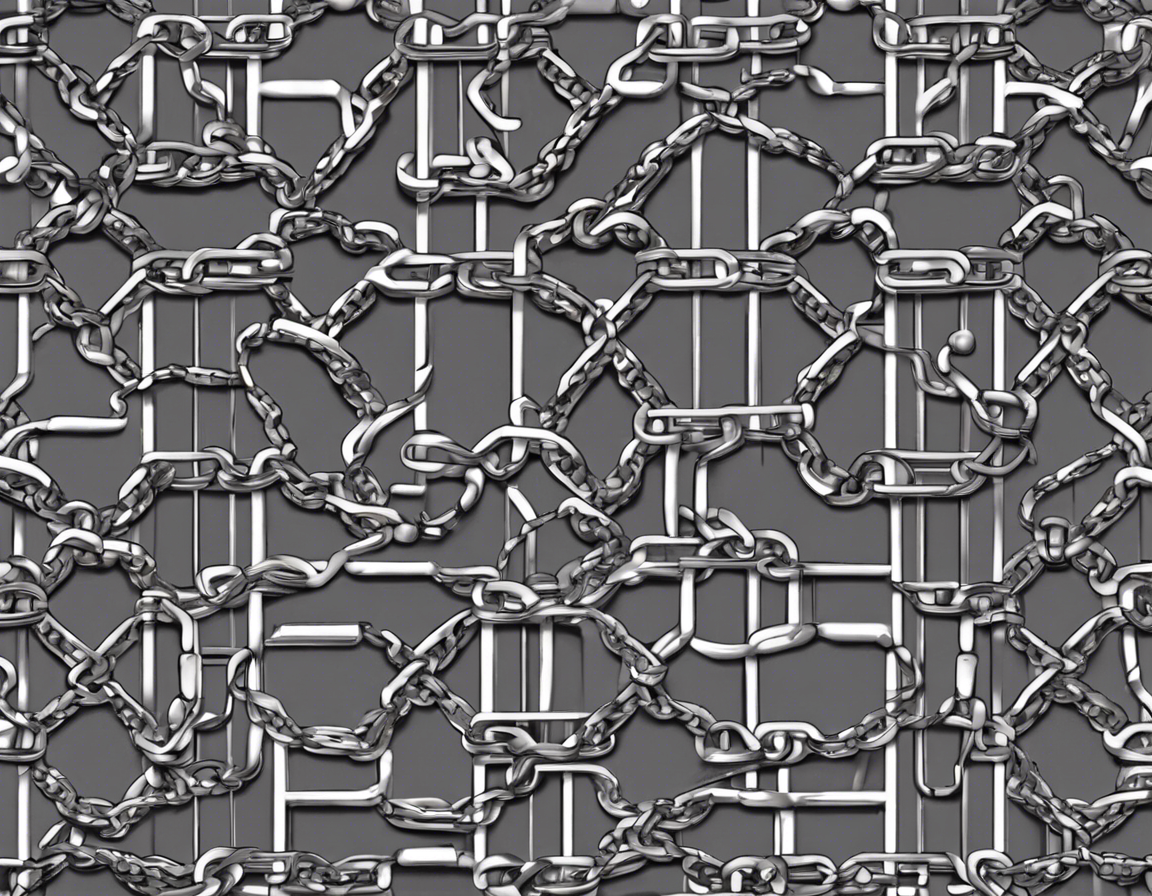Creating chain jewelry is an art form that has been practiced for centuries. Chain designs can range from delicate and intricate to bold and statement-making, appealing to a wide range of tastes and styles. Whether you are a beginner looking to start making chain jewelry or an experienced designer seeking inspiration, this comprehensive guide will walk you through the art of chain design to help you create timeless jewelry pieces.
Understanding Chain Types
When it comes to chain design, understanding different chain types is essential. Some common chain types include:
Cable Chains
Cable chains are classic and versatile chains made up of uniformly sized oval or round links. They are great for showcasing pendants or charms and can be worn alone for a minimalist look.
Rolo Chains
Rolo chains consist of symmetrical round links that are typically thicker and more robust than cable chains. They are popular for creating bold and chunky necklaces and bracelets.
Figaro Chains
Figaro chains feature a pattern of repeating smaller links followed by one large link. They are known for their unique and decorative style and are often used in men’s jewelry but can also add a touch of elegance to women’s pieces.
Box Chains
Box chains are sturdy chains made up of square links connected to create a smooth and sleek design. They are ideal for creating contemporary and polished jewelry pieces.
Rope Chains
Rope chains are made up of intertwined links that form a twisted pattern resembling a rope. They are elegant and sophisticated, making them suitable for both casual and formal wear.
Choosing the Right Materials
Selecting the right materials for your chain jewelry is crucial for creating high-quality and long-lasting pieces. Common materials for chain jewelry include:
- Sterling Silver: Known for its durability and versatility, sterling silver is a popular choice for chain jewelry.
- Gold: Gold chains come in various karats, with 14k and 18k being the most common choices for durability and value.
- Rose Gold: With a warm and romantic hue, rose gold chains add a touch of femininity to jewelry designs.
- Platinum: Platinum chains are durable, hypoallergenic, and resistant to tarnish, making them ideal for everyday wear.
Design Tips for Chain Jewelry
Consider Scale and Proportion
When designing chain jewelry, it’s essential to consider scale and proportion. Match the thickness and style of the chain to the size of the pendant or focal point to ensure a harmonious look.
Experiment with Mixed Metals
Mixing metals adds visual interest and versatility to chain jewelry designs. Don’t be afraid to experiment with different metal finishes and colors to create unique and eye-catching pieces.
Incorporate Gemstones
Adding gemstones to chain jewelry can elevate the design and add color and sparkle. Consider using gemstone beads or setting stones within the chain for a touch of elegance.
Personalize with Initials or Charms
Personalization adds a special touch to chain jewelry pieces. Incorporate initials, birthstones, or charms that hold sentimental value to create meaningful and unique designs.
Maintenance and Care Tips
To ensure that your chain jewelry pieces remain timeless and beautiful, follow these maintenance and care tips:
- Regularly clean your chain jewelry with a soft cloth to remove dirt and oils.
- Store your chain jewelry in a separate pouch or compartment to prevent tangling and scratching.
- Avoid exposing your chain jewelry to harsh chemicals, perfumes, or lotions to prevent tarnishing and damage.
- Have your chain jewelry professionally cleaned and inspected periodically to maintain its quality and shine.
Frequently Asked Questions (FAQs)
1. How do I determine the right chain length for a necklace?
The standard chain length for women’s necklaces is 16 to 20 inches, while men’s necklaces typically range from 18 to 24 inches. To find the perfect length, consider your neck size, preferred necklace style, and desired look.
2. Can I mix different chain types in one jewelry piece?
Yes, mixing different chain types can create a dynamic and textured look. Just make sure that the chains complement each other in style and thickness for a cohesive design.
3. What is the best way to add a clasp to a chain necklace?
To add a clasp to a chain necklace, use jump rings or split rings to attach the clasp securely. Make sure the clasp is easy to open and close for convenience.
4. How can I prevent my chain jewelry from tangling?
To prevent chain jewelry from tangling, store each piece separately in a jewelry pouch or box. You can also use jewelry organizers with compartments to keep chains untangled and organized.
5. Are there specific chain styles that are better for pendant necklaces?
Cable chains and rolo chains are popular choices for pendant necklaces as they provide a simple yet elegant backdrop for the pendant to shine. Consider the size and weight of the pendant when selecting the chain style.
The art of chain design offers endless possibilities for creating stunning and timeless jewelry pieces. By understanding chain types, choosing the right materials, incorporating design tips, and practicing proper maintenance, you can craft beautiful chain jewelry that stands the test of time. Let your creativity shine as you explore the art of chain design and bring your jewelry visions to life.

